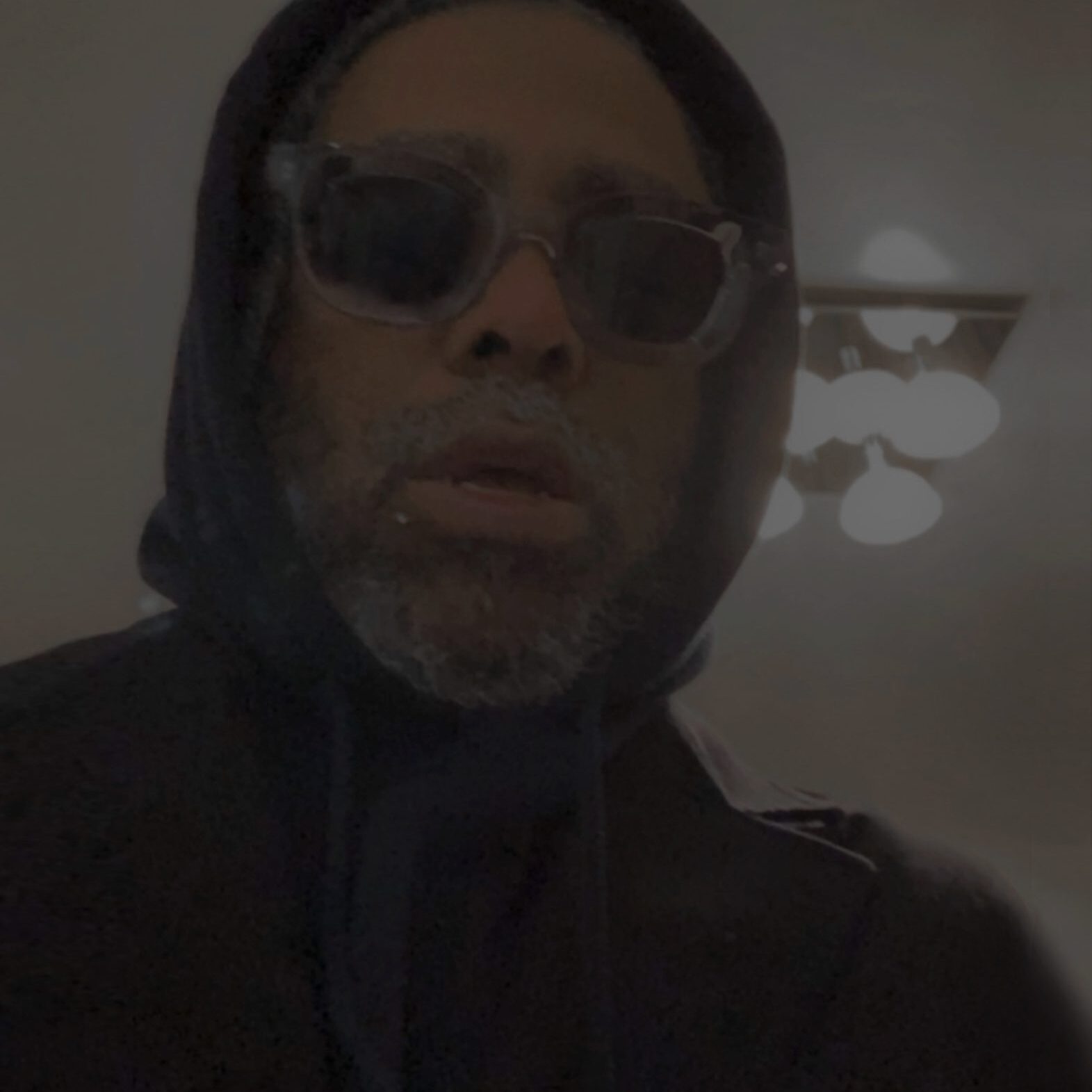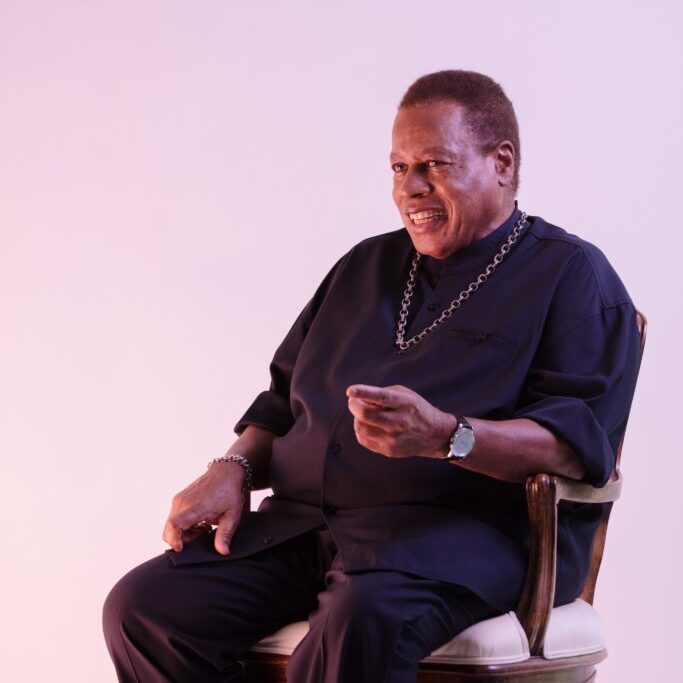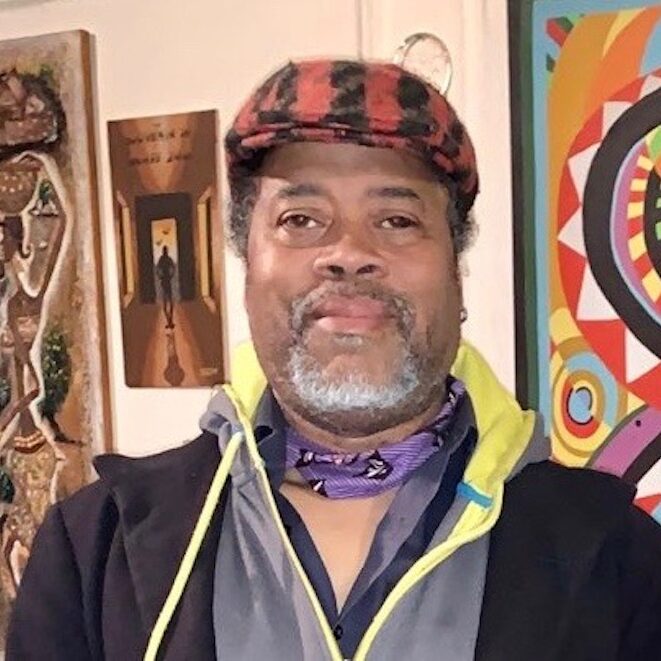WS, a longer super nova
Directed by Arthur Jafa
PAST EVENT
Live screening on loop on June 10, 9pm - 11pm
The Clemente Soto Vélez Cultural & Educational Center
107 Suffolk St, New York, NY 10006
View map +
Select digital streaming dates on June 12, 17, and 24 at 8pm; June 19 and 26 at 3pm, exclusively on LMCC.net
The digital screening will be accompanied by a conversation between Wayne Shorter, esperanza spalding, Greg Tate, and Craig Street.
Presented in partnership with The Clemente Soto Vélez Cultural & Educational Center and The Broad Stage
Arthur Jafa separates sound from image, only to collide them, forcing both eye and ear to find their balance in heart connection. He is an artist in search of a precise proximity between the seen and heard. In his WS, a longer super nova, Jafa gives us a glimpse into the genius mind of Jazz Master Wayne Shorter being his inimitable stream of conscious self. Jafa records an ongoing and intimately wild conversation between Mestre Shorter and brilliantly inspired Jazz force esperanza spalding. The conversation takes place in the eclectic home of Shorter’s friend, architect Frank Gehry. The Gehry Residence, a famously deconstructed habitable art space, makes room for Mr. Shorter’s stories to, like his music, zig zag their way to the point. WS, a longer super nova, a slice of life profile, a blues haiku, captures the dark matter entity that is Wayne Shorter.
Each online screening of WS, a longer super nova will be followed by a separate, filmed conversation between spalding and Shorter, moderated by Greg Tate + Craig Street. This conversation will delve into the relationship between spalding and Shorter as they collaborate on building a new opera, Iphigenia.

At the forefront of thinking through how Blackness is rendered, imagined and lived in society, artist, filmmaker and theorist Arthur Jafa draws from a substantial film and still image archive he has been assembling since the 1980s, to make bold, visceral films and room-size installations that lay bare anguish, outrage, power, history, cultural memory, rupture, pleasure, and repair. Placing one resonant cultural artifact – footage whether newly shot or found – next to another, through astute juxtaposition of images and ideas, coupled with lyrical, syncopated editing, he renders both the beauty of a ‘new harmonic’ and searing critique. Renowned for his cinematography – a body of work that includes Julie Dash’s seminal 1991 film Daughters of the Dust, films by Spike Lee, Isaac Julien, and John Akomfrah, and music videos for Solange Knowles and Jay-Z – Jafa creates work that approximates the radical power, beauty, and alienation of Black life in the West, while seeking to make visible (or emancipate) the power embedded in modes of African expression.

esperanza spalding (also known as irma nejando, or, i.e.) is a being who has grown to recognize love in the abstract and aspirational, and is now fully dedicated to learning how she can serve and embody actualized love through honor for and receptivity to, fellow humans, teachers, and practitioners of various regenerative arts.
bass, piano, composition, performance, voice and lyrics are tools and disciplines she is engaged in deeply to cultivate her own channel for transmitting care and beauty through vibration/sound/presence.
she has written an Opera with Wayne Shorter slated for premier in Fall 2021 // she is currently developing a mockumentary in collaboration with brontë velez and San Francisco Symphony // researching and developing liberation rituals in jazz and black dance // and continuing a lifelong collaboration with practitioners in various fields relating to music, healing and cognition to develop music with enhanced therapeutic potential.
she is presently paid by Harvard University to co-create and learn with students enrolled here, working on developing creative practices that serve the restoration of people and land.

Wayne Shorter has been called a genius, a trailblazer, a visionary, and one of the world’s greatest composers. Born in Newark, New Jersey, he grew up poring through comic books and imagining adventures in undiscovered universes. He started his musical career on clarinet, but switched to tenor sax, which he studied at New York University. Upon graduating, he was drafted into the Army.
In 1959, Shorter joined Art Blakey’s Jazz Messengers as a saxophonist, eventually composing for the group and becoming its music director. During the Blakey period, Shorter also made his debut on records as a leader, cutting several albums for Chicago’s Vee-Jay label. After a few prior attempts to hire him away from Blakey, Miles Davis finally convinced Shorter to join his second historic quintet in September 1964, alongside Herbie Hancock, Tony Williams, and Ron Carter.
Staying with Miles until 1970, Shorter became the band’s most prolific composer at times, contributing tunes like “E.S.P.,” “Pinocchio,” “Nefertiti,” “Sanctuary,” “Footprints,” “Fall,” and the signature description of Miles, “Prince of Darkness.” While playing through Miles’s transition from loose post-bop acoustic jazz into electronic jazz-rock, Shorter also took up the soprano sax in late 1968, an instrument that turned out to be more suited to riding above the new electronic timbres than the tenor. As a prolific solo artist for Blue Note during this period, Shorter expanded his palette from hard bop almost into the atonal avant-garde, with fascinating excursions into jazz-rock territory toward the turn of the decade.
This marked the beginning of Shorter’s exploration of unchartered territories that led him to form—with pianist Joe Zawinul—the world’s first fusion band, Weather Report, in 1970. Shorter’s playing grew mellower, pithier, more consciously melodic. By now he was playing mostly on soprano, though the tenor would re-emerge more toward the end of Weather Report’s run. Shorter’s solo ambitions were mostly on hold during the Weather Report’s days, resulting in but one atypical solo album, Native Dancer, a side trip into Brazilian-American tropicalismo in tandem with Milton Nascimento. Shorter also revisited the past in the late 1970s by touring with Freddie Hubbard and ex-Miles sidemen Herbie Hancock, Ron Carter, and Tony Williams as V.S.O.P. Shorter left Weather Report in 1985.
Over the next decade, Shorter produced a succession of jazz albums for the Columbia label. During this period, he became known for collaborations with greats across genres, including Joni Mitchell, Steely Dan, Carlos Santana, and Don Henley. After three Columbia albums during 1986–1988, and a tour with Santana, he lapsed into silence, finally emerging in 1992 with Wallace Roney and the V.S.O.P. rhythm section in the A Tribute to Miles band.
In 1995, Shorter released High Life on the Verve label, and in 1997 it received the Grammy® for best contemporary jazz album. Two years later, he reunited with longtime friend Herbie Hancock for an intimate duet recording entitled 1+1, winning another Grammy® for their collaboration. He guested on the Rolling Stones’s Bridges to Babylon in 1997, and on Herbie Hancock’s Gershwin's World in 1998. In 2001, he was back with Hancock for Future 2 Future and on Marcus Miller's M².
In 2000, he formed his first acoustic group under his name, The Wayne Shorter Quartet, featuring Danilo Pérez, John Patitucci, and Brian Blade, which still remains. The group released Footprints Live! in 2002, followed by Alegría in 2003, and Beyond the Sound Barrier in 2005.
At the same time, Shorter began exploring the world of classical music. He paired with the Los Angeles Philharmonic, the Royal Concertgebouw, and the BBC Chamber Orchestra, unveiling his new symphonic repertoire.
Shorter is the recipient of the NEA Jazz Masters Award (1998), the Grammy Lifetime Achievement Award (2015), the prestigious Polar Music Prize (2017) and a Kennedy Center Honors Award (2018)
With a total of 11 Grammy Awards under his belt, Shorter refuses to slow down. Currently, in collaboration with Esperanza Spalding, he is composing his first opera, Iphigenia, his ultimate expression honoring the nobility of humanity: to awake one’s inherent power.
Shorter, who originally studied as a visual artist, continues to pursue the visual arts as well as music. In September 2018, he released Emanon, a project encompassing three discs of interweaving jazz explorations and orchestral arrangements, and an accompanying graphic novel illustrated by Randy DuBurke. Shorter lives with his wife, Carolina, in Los Angeles.
The realization of Iphigenia is a lifelong dream of the Composer's.

Greg Tate is a writer, musician and cultural provocateur who thrives on Harlem's Sugar Hill.
His books include the acclaimed essay collection Flyboy in The Buttermilk, Flyboy 2: The Greg Tate Reader, Midnight Lightning:Jimi Hendrix and The Black Experience,Brooklyn Kings/New York City’s Black Bikers (w/photographer MartinDixon) and Everything But The Burden—What White People Are Taking From Black Culture. Tate co-edited the museum catalogue Writing The Future:Basquiat and the Hiphop Generation for MFA Boston, and also collaborated on the exhibition of the same name with MFA curator Liz Munsell. Tate has been a Visiting Professor at Columbia,Yale, Brown, San Francisco State, Princeton University and Williams College. He was a Staff Writer at The Village Voice from 1987 to 2004 and his writings on culture and politics have also been published in The New York Times, The Washington Post, Artforum, Rolling Stone and VIBE. Since 1999 Tate, a co-founder of the Black Rock Coalition, has led the Conducted Improv big band Burnt Sugar The Arkestra Chamber who tour internationally and have released 17 albums on their own Avant Groidd imprint. In 2019 the group celebrated their twentieth anniversary with shows at Lincoln Center, Brooklyn Museum and the legendary Apollo Theatre. Tate is also co-leader, with saxophonist Avram Fefer, of the electroacoustic quartet, Rivers On Mars, whose debut album, Deja VooDoo, was released on Ropeadope Records in 2018.
Craig Street is a Grammy winning record producer. Born in Oakland, California he has worked as a photographer, a radio programmer, a musician and a plasterer.
A short list of his production credits include; Meshell Ndegeocello-“Bitter”, k.d.
Among those he has worked with live and in the studio are: Ornette Coleman, Allison Krause, Bill Frisell, Olu Dara, Keb Mo, Tom Verlaine, Geri Allen, Tony Williams, Ivan Julian, Brian Blade, Wendy and Lisa, David Hildalgo, The Canadian Brass, Jimmy Haskell, The Dirty Dozen Brass Band, Greg Leisz, Richard Thompson, Madeline Peyroux, Javon Jackson, Roseanne Cash, Jim Keltner, Mark Ribot, Jonathan Wilson, Fred Hopkins, Toshi Reagon, Derek Trucks, Abe Laboriel Jr., Patty Scialfa, Bruce Springsteen, Jacky Terrasson, David Torn, David Campbell, Patty Griffin, Dr. John, Van Dyke Parks, Pharoah Sanders, Robert Plant, Medeski, Martin & Wood, Charlie Sexton, Lawrence Butch Morris, and T Bone Burnett.
He lives in the Finger Lakes region of New York.
Produced by Nanette Nelms. Commissioned by LMCC for the River To River Festival. Presented in partnership with The Clemente Soto Vélez Cultural & Educational Center and The Broad Stage in Los Angeles.
